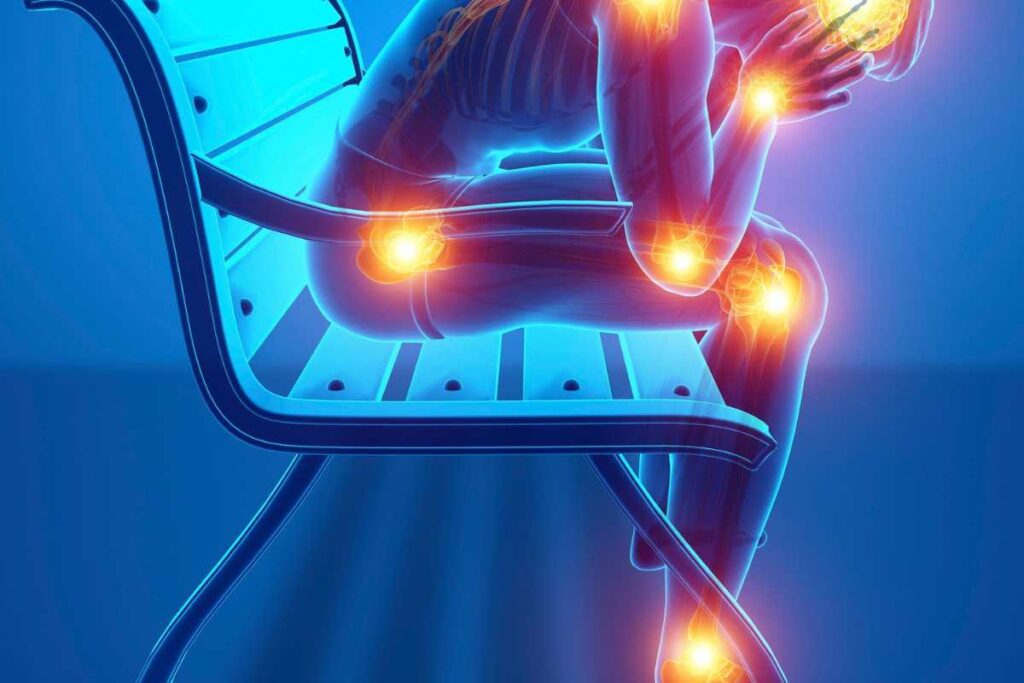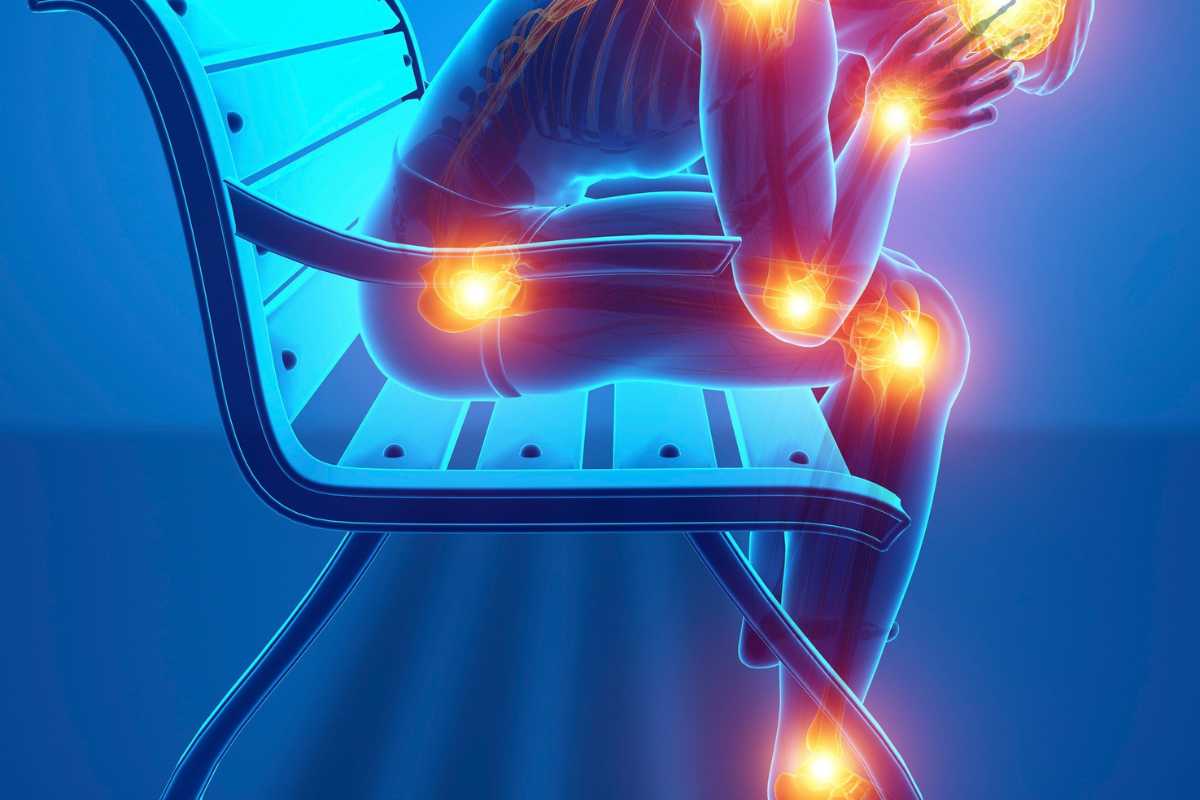Prophetic Medicine for Joint Pain: Nigella Sativa’s Therapeutic Potential
Prophetic Medicine for Joint Pain: Nigella Sativa’s Therapeutic Potential

Prophetic medicine offers a natural and holistic approach to alleviate joint pain, drawing from the teachings of Prophet Muhammad (PBUH). This ancient practice encompasses traditional healing methods that have been passed down through generations.
By focusing on the principles of prophetic medicine, individuals suffering from joint pain can explore effective remedies without relying solely on modern pharmaceutical interventions.
Unlike conventional treatments, which often target symptoms rather than underlying causes, prophetic medicine emphasizes a comprehensive and integrated approach to healing.
It takes into account various factors such as diet, lifestyle modifications, herbal remedies, and physical therapies. Through this holistic perspective, prophetic medicine aims to address not only the physical manifestations of joint pain but also its root causes.
We will explore its historical significance, examine evidence from experimental studies, and discuss expressions of support from reputable organizations like the Arthritis Foundation. Join us as we uncover the wisdom behind prophetic medicine’s approach to managing joint pain effectively.
| Causes of Joint Pain | Simple Explanation |
|---|---|
| Arthritis | Inflammation of the joints |
| Injury | Damage to the joints due to accidents or trauma |
| Overuse | Excessive strain on the joints from repetitive movements |
| Infection | Joint pain caused by bacterial or viral infection |
| Gout | Build-up of uric acid crystals in the joints |
| Lupus | Autoimmune disease that affects the joints |
| Fibromyalgia | Chronic pain disorder that affects the muscles and joints |
| Osteoporosis | Weak and brittle bones leading to joint pain |
| Bursitis | Inflammation of the fluid-filled sacs that cushion the joints |
| Tendonitis | Inflammation of the tendons connecting muscles to bones |
“Explore our latest articles on Prophetic Medicine to discover simple, natural remedies that can improve your health. Check them out now and start feeling better!“
Understanding the Causes of Joint Pain
Joint pain can be a real pain in the neck (or rather, the knees, hips, or any other joint in your body). But what exactly causes this discomfort? Let’s dive into the different factors that contribute to joint pain.
Injury and Inflammation
One of the most common causes of joint pain is injury. When you twist your ankle playing basketball or strain your shoulder lifting heavy objects, it can lead to acute joint pain. These injuries can damage the ligaments, tendons, or cartilage surrounding the joints, making movement painful and difficult.
Inflammation is another culprit behind joint pain. Conditions like arthritis cause inflammation in the joints, resulting in swelling and discomfort. Arthritis is a broad term that encompasses several diseases affecting the joints. The most common type is osteoarthritis, which occurs due to age-related degeneration of cartilage. This wear and tear on your joints can lead to pain and stiffness over time.
Autoimmune Disorders
Autoimmune disorders are conditions where your immune system mistakenly attacks healthy cells in your body. Some autoimmune disorders affect the joints and can cause chronic joint pain. Rheumatoid arthritis is an example of such a disorder. It occurs when your immune system attacks the lining of your joints, leading to inflammation and damage.
The exact mechanism by which autoimmune disorders contribute to joint pain is still being studied. However, researchers believe that it involves an inflammatory response triggered by immune cells attacking healthy tissues in the joints. This inflammatory effect leads to swelling, stiffness, and ultimately, joint pain.
Oxidative Stress and Blood Flow
Oxidative stress refers to an imbalance between free radicals (harmful molecules) and antioxidants (protective molecules) in our bodies. When there’s an excess of free radicals caused by factors like pollution or smoking, it can lead to oxidative damage in various tissues throughout our bodies – including our joints. This oxidative stress can contribute to joint pain and inflammation.
Blood flow also plays a role in joint health. Good blood circulation helps deliver essential nutrients and oxygen to the joints, promoting their proper function and reducing pain. Conversely, poor blood flow can hinder the healing process and exacerbate joint pain.
Understanding the causes of joint pain is crucial in finding effective solutions for managing it. Whether it’s through injury, inflammation, autoimmune disorders, or oxidative stress, identifying the root cause allows healthcare professionals to tailor treatment plans accordingly. By addressing these underlying factors, we can take steps towards alleviating joint pain and improving overall quality of life.
The Healing Power of Nigella Sativa in Osteoarthritis Treatment
Nigella Sativa, also known as black seed, has been used for centuries to alleviate osteoarthritis symptoms. This natural remedy has gained popularity due to its potential benefits in reducing joint pain and improving mobility.
Anti-inflammatory Properties for Joint Pain Relief
The active compounds found in Nigella Sativa have powerful anti-inflammatory properties that can help reduce joint pain. Inflammation is a common characteristic of osteoarthritis, leading to discomfort and limited mobility. By targeting the inflammatory response, Nigella Sativa may provide relief from these symptoms.
Regular consumption of Nigella Sativa oil or seeds may improve mobility and decrease stiffness in osteoarthritis patients. The anti-inflammatory effects of this natural remedy can help reduce swelling and pain associated with joint inflammation, allowing individuals to move more freely.
Potential Benefits for Osteoarthritis Management
In addition to its anti-inflammatory properties, Nigella Sativa also exhibits antioxidant effects. These antioxidants help protect the body’s cells from damage caused by harmful molecules called free radicals. In the context of osteoarthritis, this can be particularly beneficial as oxidative stress is believed to contribute to the progression of the disease.
Furthermore, some studies suggest that Nigella Sativa may have a protective effect on cartilage, which is crucial for maintaining healthy joints. It has been shown to inhibit enzymes that break down cartilage tissue, potentially slowing down the degenerative process seen in osteoarthritis.
Exploring Mechanisms of Action
The exact mechanisms through which Nigella Sativa exerts its therapeutic effects are still being investigated. However, researchers believe that one key component responsible for its medicinal properties is thymoquinone (TQ). TQ has been found to modulate various molecular pathways involved in inflammation and pain perception.
By inhibiting the production of inflammatory mediators such as tumor necrosis factor (TNF) and prostaglandins, Nigella Sativa may help alleviate joint pain in osteoarthritis patients. It has been suggested that Nigella Sativa’s compounds can inhibit lipid peroxidation, a process that damages cell membranes and contributes to inflammation.
Incorporating Nigella Sativa into Your Routine
There are several ways to incorporate Nigella Sativa into your routine for potential osteoarthritis relief:
- Consuming Nigella Sativa oil: Add a few drops of Nigella Sativa oil to your meals or beverages daily.
- Eating Nigella Sativa seeds: Sprinkle ground or whole Nigella Sativa seeds on salads, yogurt, or other dishes.
- Trying black seed supplements: Consult with a healthcare professional before taking any supplements to determine the appropriate dosage and ensure safety.
It is important to note that while some individuals may experience benefits from using Nigella Sativa for joint pain relief, it may not work for everyone. It is always advisable to consult with a healthcare professional before incorporating any new treatments or supplements into your routine.
Exploring the Link Between Prophet Muhammad (PBUH) and Joint Pain Remedies
Prophet Muhammad (PBUH) was not only a spiritual leader but also provided guidance on various aspects of life, including health and well-being. His teachings emphasized the importance of maintaining good health through natural remedies.The Prophet recommended various herbs and practices that can provide effective relief.
Herbs Recommended by the Prophet
The Prophet Muhammad (PBUH) mentioned several herbs that are known for their potential in alleviating joint pain. One such herb is ginger, which has anti-inflammatory properties that can help reduce swelling and relieve pain in the joints. Another herb mentioned is turmeric, which contains a compound called curcumin that has been shown to have anti-inflammatory effects.
The Benefits of Hijama Therapy
In addition to herbs, the Prophet also recommended certain practices for joint pain relief. One such practice is hijama therapy, also known as cupping therapy. This ancient technique involves creating suction on specific points of the body using cups. It is believed to improve blood circulation and promote healing in the affected area.
Importance of Physical Activity
Regular physical activity is crucial for maintaining healthy joints. The Prophet emphasized the importance of staying active and engaging in moderate exercise to prevent joint pain and maintain overall fitness. Simple activities like walking or swimming can help strengthen muscles around the joints, providing support and reducing discomfort.
Dietary Recommendations
The Prophet Muhammad (PBUH) also provided dietary recommendations that can aid in managing joint pain. He encouraged consuming foods rich in omega-3 fatty acids, such as fish or flaxseeds, as they have anti-inflammatory properties that can alleviate joint inflammation. He advised avoiding excessive consumption of foods high in purines like organ meats and shellfish, as they can contribute to joint pain caused by conditions like gout.
Seeking Medical Advice
While the teachings of the Prophet Muhammad (PBUH) provide valuable guidance for managing joint pain, it is important to remember that seeking medical advice is crucial for proper diagnosis and treatment. Joint pain can be caused by various underlying conditions, and a healthcare professional can provide personalized recommendations based on individual needs.
Natural Herbs and Spices for Rheumatoid Arthritis Symptom Relief
Turmeric, ginger, and cinnamon are popular herbs and spices known for their anti-inflammatory properties. These natural remedies have been used for centuries to manage symptoms of rheumatoid arthritis.
Turmeric: A Powerful Anti-Inflammatory Spice
Turmeric contains a compound called curcumin, which has potent anti-inflammatory effects. It can help reduce joint pain, swelling, and stiffness associated with rheumatoid arthritis. Incorporating turmeric into your diet can be as simple as adding it to curries, soups, or even warm milk.
Ginger: Soothing Joint Pain Naturally
Ginger is another herb that possesses anti-inflammatory properties. It can help alleviate joint pain and improve mobility in individuals with rheumatoid arthritis. You can enjoy ginger by adding it to teas, stir-fries, or using it as a spice in various dishes.
Cinnamon: Aromatic Spice with Therapeutic Benefits
Cinnamon not only adds a delightful aroma to foods but also offers therapeutic benefits for those with rheumatoid arthritis. It has anti-inflammatory properties that may help reduce pain and swelling in the joints. Sprinkle some cinnamon on your morning oatmeal or add it to baked goods for a flavorful way to incorporate this spice into your diet.
Boswellia Extract: Traditional Remedy for Joint Health
Boswellia extract comes from the resin of the Boswellia serrata tree and has been traditionally used in Ayurvedic medicine to relieve joint pain and inflammation caused by conditions like rheumatoid arthritis. This herbal remedy may help reduce swelling and improve joint flexibility when taken orally or applied topically.
Including these herbs and spices in your daily routine may offer natural relief from rheumatoid arthritis symptoms. However, it’s important to remember that while these remedies can provide some benefit, they should not replace medical treatment or prescribed medications.
It’s always a good idea to consult with your healthcare provider before incorporating any new herbs or spices into your routine, especially if you have underlying health conditions or are taking other medications. They can provide guidance on the appropriate dosage and potential interactions with other drugs.
Honey: An Effective Remedy in Chronic Rheumatoid Arthritis Treatment
Honey, a sweet and sticky substance produced by bees, is not only delicious but may also offer relief to those suffering from chronic rheumatoid arthritis. This natural remedy has been praised for its antioxidant properties, which can help reduce inflammation associated with this condition.
One of the key benefits of honey in treating rheumatoid arthritis lies in its ability to decrease pain and improve joint function. Research suggests that regular consumption of honey can lead to a reduction in pain levels and an improvement in overall joint mobility for individuals with rheumatoid arthritis. This is great news for those seeking alternative treatment options.
But how does honey achieve these positive effects? The answer lies in its antioxidant properties. Honey contains various compounds such as flavonoids and phenolic acids that act as antioxidants, helping to neutralize harmful free radicals in the body. By reducing oxidative stress and inflammation, honey may alleviate symptoms associated with chronic rheumatoid arthritis.
In addition to consuming honey orally, applying it topically can also provide relief from joint pain and inflammation. Many individuals find that massaging honey directly onto affected areas helps soothe discomfort and reduce swelling. This topical application allows the beneficial properties of honey to penetrate the skin and target the underlying causes of joint pain.
While honey shows promise as a natural remedy for rheumatoid arthritis, it’s important to note that it should not replace conventional medical treatments entirely. It is best used as a complementary therapy alongside prescribed medications or other forms of treatment recommended by healthcare professionals.
To incorporate honey into your routine, consider the following tips:
- Choose raw or organic honey: Opt for raw or organic varieties of honey as they are less processed and retain more of their beneficial compounds.
- Mix it up: Add a spoonful of honey to warm water or herbal tea for a soothing drink that may help reduce inflammation.
- Try topical applications: Apply honey directly to affected joints and gently massage it in for relief from pain and inflammation.
- Consult with a healthcare professional: Before making any changes to your treatment plan, consult with your healthcare provider to ensure that honey is safe for you and won’t interact negatively with any medications you may be taking.
Integrating Prophetic Medicine into Modern Joint Pain Management
Prophetic medicine offers a complementary approach to conventional treatments for joint pain management. By combining natural remedies with modern medical approaches, individuals may experience enhanced effectiveness in their treatment journey. However, it is crucial to consult with healthcare professionals when integrating prophetic medicine into modern practices.
Complementary Therapies for Enhanced Effectiveness
Integrating prophetic medicine alongside conventional treatments can provide additional benefits in managing joint pain. Complementary therapies such as herbal remedies, cupping therapy, and dietary modifications have been used for centuries and are considered part of prophetic medicine. These therapies offer a holistic approach that targets both the physical and spiritual aspects of well-being.
- Herbal Remedies: Utilizing herbs mentioned in prophetic traditions, such as ginger or turmeric, can help reduce inflammation and alleviate joint pain.
- Cupping Therapy: This ancient technique involves creating suction on specific points of the body using cups. It promotes blood circulation and may relieve muscle tension associated with joint pain.
- Dietary Modifications: Following the principles of a healthy diet mentioned in prophetic traditions can support overall health and potentially reduce inflammation in the joints.
Consulting Healthcare Professionals for Guidance
While integrating prophetic medicine into joint pain management can be beneficial, it is essential to seek guidance from healthcare professionals. They possess the expertise to assess individual conditions and recommend appropriate treatment plans.
- Medical Evaluation: A thorough evaluation by a healthcare professional helps determine the underlying cause of joint pain and ensures proper diagnosis before considering any complementary therapy.
- Treatment Compatibility: Healthcare professionals can assess if incorporating prophetic medicine aligns with ongoing conventional treatments without interfering or causing adverse effects.
- Dosage and Administration: Experts can guide individuals on the correct dosage, administration methods, and potential interactions between conventional medications and herbal remedies.
Evidence-Based Approach through Clinical Trials
To further validate the efficacy of integrating prophetic medicine into modern joint pain management, several studies have explored the therapeutic potential of prophetic remedies.
- Clinical Trials: Research studies have investigated the effects of prophetic medicine on joint pain. For example, a clinical trial examined the use of articular injections derived from honey and camel milk for hip joint pain management.
- Synthesis of MMP: Studies have shown that certain prophetic remedies can inhibit matrix metalloproteinase (MMP) synthesis, which is associated with cartilage degradation in joint diseases.
- Toxicological Effects: Research has also focused on assessing the safety profile and toxicological effects of various prophetic remedies to ensure their suitability for long-term use.
By adopting an evidence-based approach through clinical trials and research, healthcare professionals can make informed decisions regarding the integration of prophetic medicine into modern joint pain management practices.
Incorporating prophetic medicine alongside conventional treatments offers individuals a holistic approach to managing joint pain. However, it is crucial to consult with healthcare professionals who can provide guidance based on individual circumstances and medical history. Together, these approaches pave the way for more effective and personalized joint pain management strategies.
Benefiting from Prophetic Medicine for Joint Pain Relief
We began by understanding the causes of joint pain and then delved into the healing power of Nigella Sativa in osteoarthritis treatment. We also discussed the link between Prophet Muhammad (PBUH) and joint pain remedies, highlighting the wisdom behind these natural remedies. We explored the effectiveness of natural herbs and spices as well as honey in managing rheumatoid arthritis symptoms. Finally, we emphasized the importance of integrating prophetic medicine into modern joint pain management.
By incorporating these time-tested remedies into your daily routine, you can potentially experience relief from joint pain and improve your overall well-being. However, it is crucial to consult with a healthcare professional before making any significant changes to your treatment plan. They can provide personalized guidance based on your specific condition and help ensure that you are using these remedies safely and effectively.
If you are seeking natural alternatives to manage joint pain, consider exploring the world of prophetic medicine. By combining ancient wisdom with modern knowledge, you may find a holistic approach that complements your existing treatments or offers new possibilities for relief.
FAQs
Are there any side effects associated with using prophetic medicine for joint pain?
There are generally no serious side effects associated with using prophetic medicine for joint pain when used appropriately. However, individual reactions may vary, so it’s essential to monitor how your body responds to any new remedy or treatment method. If you experience any adverse effects or allergic reactions after using prophetic medicine, discontinue use immediately and consult a healthcare professional.
Can I use prophetic medicine alongside my prescribed medications?
It is crucial to consult with a healthcare professional before using prophetic medicine alongside prescribed medications. While many natural remedies can be complementary to conventional treatments, some interactions may occur that could potentially affect the effectiveness of your medications. Your healthcare provider will be able to provide personalized guidance and ensure that there are no contraindications or potential risks.
How long does it take to see results from using prophetic medicine for joint pain?
The time it takes to see results from using prophetic medicine for joint pain can vary depending on various factors, including the severity of your condition, your body’s response to the remedy, and how consistently you use it. Some individuals may experience relief within a few weeks, while others may require more extended periods. It is essential to be patient and consistent in your approach while monitoring any changes in your symptoms.
Can prophetic medicine completely cure joint pain?
Prophetic medicine offers natural remedies that can help manage joint pain and provide relief. However, it is important to note that joint pain can have various underlying causes, such as arthritis or injury. While prophetic medicine may alleviate symptoms and improve overall well-being, it may not completely cure the underlying condition. It is advisable to consult with a healthcare professional for a comprehensive evaluation and appropriate treatment plan.
Where can I find authentic prophetic medicine products?
Authentic prophetic medicine products can often be found at specialized health stores or online platforms that focus on natural remedies. When purchasing these products, it is crucial to ensure their authenticity by researching reputable sellers and checking for certifications or endorsements from reliable sources. Consulting with knowledgeable experts in the field can guide you towards trusted brands and sources of genuine prophetic medicine products.







